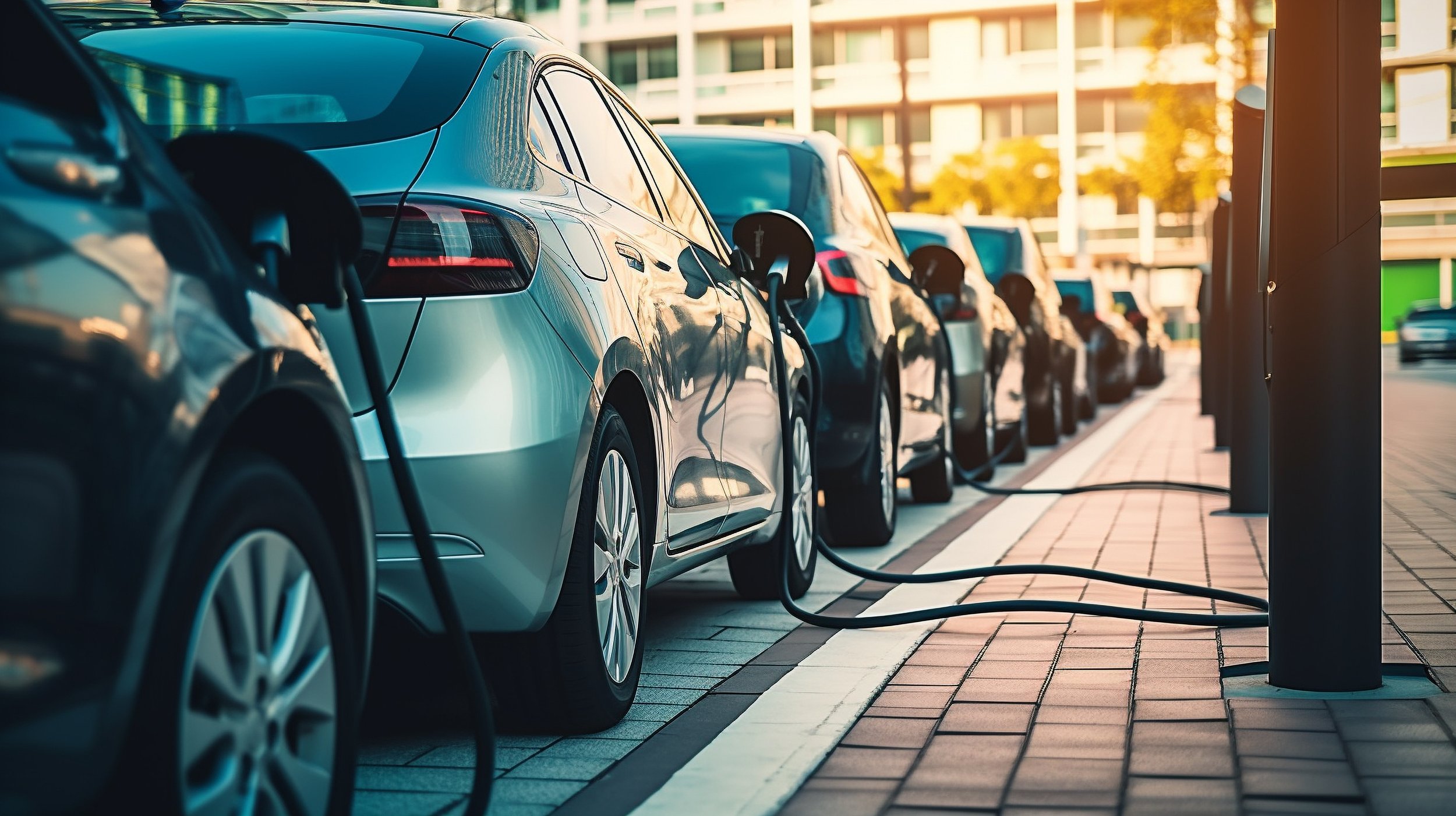
Electric cars, once a novelty, are now becoming a mainstream mode of transportation. As concerns over climate change and fossil fuel dependency grow, more people are turning to electric vehicles (EVs) for their environmental benefits and efficiency. However, transitioning from a gasoline-powered car to an electric one involves understanding how to charge them and finding appropriate charging solutions for electric vehicles. This article provides an in-depth look at electric vehicles and the various methods of charging them, ensuring that potential EV owners have all the information they need.
Table of Contents
The Rise of Electric Cars
Electric vehicles have been around for over a century, but it is only in the past decade that they have gained significant traction. Advances in battery technology, increased environmental awareness, and supportive government policies have all contributed to the rise of electric cars. Major automakers, including Tesla, Nissan, and Chevrolet, as well as traditional manufacturers like BMW, Ford, and Volkswagen, have all introduced electric models to their lineups.
Environmental Impact
One of the primary reasons for the shift towards electric vehicles is their lower environmental impact. Traditional internal combustion engine (ICE) vehicles emit greenhouse gases and pollutants that contribute to air pollution and global warming. In contrast, electric cars produce zero tailpipe emissions, and when charged with renewable energy, their overall carbon footprint is lower than that of gasoline-powered vehicles.
Cost Efficiency
While the upfront cost of an electric car can be higher than that of a conventional vehicle, the long-term savings are substantial. Electric cars have fewer moving parts, meaning they require less maintenance. Additionally, electricity is generally cheaper than gasoline, resulting in lower fueling costs. Over time, these savings can offset the initial purchase price, making electric cars a cost-effective choice.
Types of Electric Cars
There are several types of electric vehicles, each with its own charging requirements and capabilities. Understanding these differences is crucial for choosing the right EV and charging solution.
Battery Electric Vehicles (BEVs)
BEVs, also known as all-electric vehicles, run on electricity. They are equipped with a large battery pack that powers an electric motor. BEVs need to be plugged in to recharge their batteries and offer the highest level of environmental benefits since they produce no emissions.
Plug-in Hybrid Electric Vehicles (PHEVs)
PHEVs combine an electric motor with a traditional internal combustion engine. They can operate in mode for a specific range before the gasoline engine kicks in. PHEVs offer the flexibility of using gasoline for longer trips while benefiting from electric power for shorter commutes.
Hybrid Electric Vehicles (HEVs)
HEVs are similar to PHEVs but cannot be plugged in to recharge their batteries. Instead, they rely on regenerative braking and the internal combustion engine to charge the battery. While HEVs offer improved fuel efficiency compared to traditional vehicles, their environmental benefits are not as significant as those of BEVs and PHEVs.
How to Charge Electric Cars
Charging an electric car involves transferring electricity from the power grid to the vehicle’s battery. There are several methods and locations for charging, each with its own advantages and considerations.
Home Charging
Home charging is the most convenient and cost-effective method for most electric car owners. There are two main types of home charging:
- Level 1 Charging: This method uses a standard 120-volt household outlet and requires no particular installation. Level 1 charging is the slowest option, adding 3-5 miles of range per hour. It is suitable for overnight charging and for drivers with short daily commutes.
- Level 2 Charging: Level 2 charging uses a 240-volt outlet, similar to those used for large appliances like dryers. This method requires the installation of a specialized charging station. Level 2 charging is much faster than Level 1, adding 20-30 miles of range per hour. It is ideal for overnight charging and for drivers who need to recharge their vehicles more.
Public Charging Stations
Public charging stations provide a convenient option for charging on the go. These stations are located in various places, including shopping centers, parking garages, and along highways. There are three main types of public charging:
Level 2 Charging: Similar to home Level 2 charging, these stations use 240-volt outlets and provide a moderate charging speed. They are suitable for longer stops, such as shopping or dining.
DC Fast Charging: Also known as Level 3 charging, DC fast charging uses direct current (DC) to provide a rapid charge. These stations can add 60-80 miles of range in just 20 minutes, making them ideal for long road trips. However, not all electric cars are compatible with DC fast charging, so it’s essential to check your vehicle’s specifications.
Tesla Superchargers: Exclusive to Tesla vehicles, Superchargers are a network of high-speed charging stations that provide even faster charging than standard DC fast chargers. They can add up to 200 miles of range in 15 minutes. Tesla owners can use the company’s app to locate and navigate to the nearest Supercharger.
Workplace Charging
Many employers are now offering workplace charging as a perk for employees who drive electric cars. These charging stations are Level 2 chargers and provide a convenient way to top up your battery while you work. If your workplace doesn’t currently offer charging, consider discussing the benefits with your employer.
Charging Infrastructure and Compatibility
The availability and compatibility of charging infrastructure are crucial factors for electric vehicle owners. Different EVs have different charging ports and connectors, so it’s essential to ensure that your vehicle is compatible with the charging stations you plan to use.
Charging Connectors
There are several types of charging connectors used by electric vehicles:
Type 1 (SAE J1772): Commonly used in North America for Level 1 and Level 2 charging. Most EVs sold in the region come with a Type 1 connector.
Type 2 (Mennekes): Standard in Europe for Level 2 and Level 3 charging. It is also used by Tesla vehicles in Europe.
CHAdeMO: A DC fast charging standard developed in Japan. It is used by several Japanese automakers, including Nissan and Mitsubishi.
CCS (Combined Charging System): A versatile connector that supports both AC and DC charging. It is becoming increasingly popular among European and American automakers.
Tesla Connector: Exclusive to Tesla vehicles, this connector supports both AC and DC charging through the company’s Supercharger network.
Charging Networks
There are several major charging networks that operate public charging stations. Some of the most prominent ones include:
- ChargePoint: One of the largest networks in North America, offering a mix of Level 2 and DC fast charging stations.
- EVgo: EVgo specializes in fast charging in DC and has a growing network of stations across the United States.
- Electrify America: An expanding network of DC fast chargers offering high-speed charging options for a variety of EV models.
- Ionity: A European network focused on providing high-power DC fast charging along major highways.
Best Practices for Charging
To ensure the longevity and efficiency of your electric vehicle’s battery. It’s essential to follow the best practices for charging:
Avoid Frequent Fast Charging: While DC fast charging is convenient, frequent use can degrade your battery over time. Use Level 2 charging for regular use and reserve fast charging for long trips.
Don’t Overcharge: Charging your battery to 100% can reduce its lifespan. Aim to keep your battery level between 20% and 80% for daily use.
Monitor Charging Habits: Use your vehicle’s app or onboard system to track your charging habits and battery health. This can help you identify any issues and adjust your routine.
Plan Long Trips: Before embarking on a long journey, plan your route and identify charging stations along the way. Apps like PlugShare and A Better Routeplanner can help you find compatible chargers and estimate charging times.
Future of Electric Car Charging
As electric vehicles become more prevalent, the charging infrastructure will continue to evolve. Innovations such as wireless charging, ultra-fast charging stations, and vehicle-to-grid technology are on the horizon, promising to make EV ownership even more convenient and sustainable.
Wireless Charging
Wireless charging, also known as inductive charging, allows electric vehicles to charge without being plugged in. Instead, a charging pad on the ground transfers energy to a receiver on the car. This technology is still in development but holds great potential for simplifying the charging process.
Ultra-Fast Charging
Ultra-fast charging stations, capable of delivering up to 350 kW of power, are being developed to reduce charging times. These stations could add hundreds of miles of range in a few minutes, making electric vehicles even more practical for long-distance travel.
Vehicle-to-Grid (V2G) Technology
V2G technology allows electric vehicles to not only draw power from the grid but also supply it back. This can help balance the grid during peak demand times and provide backup power to homes during outages. While still in its early stages, V2G has the potential to transform the relationship between electric vehicles and the power grid.
Conclusion
Electric cars represent the future of transportation, offering environmental benefits, cost savings, and a smooth, quiet driving experience. Understanding how to charge https://futurecharging.com.au/ your electric vehicle is essential for maximizing its efficiency and lifespan. Whether you’re charging at home, at work, or on the go, being informed about the various methods and best practices will ensure that you get the most out of your electric car. As technology continues to advance and charging infrastructure expands, owning an electric vehicle will become even more convenient and accessible for everyone.







